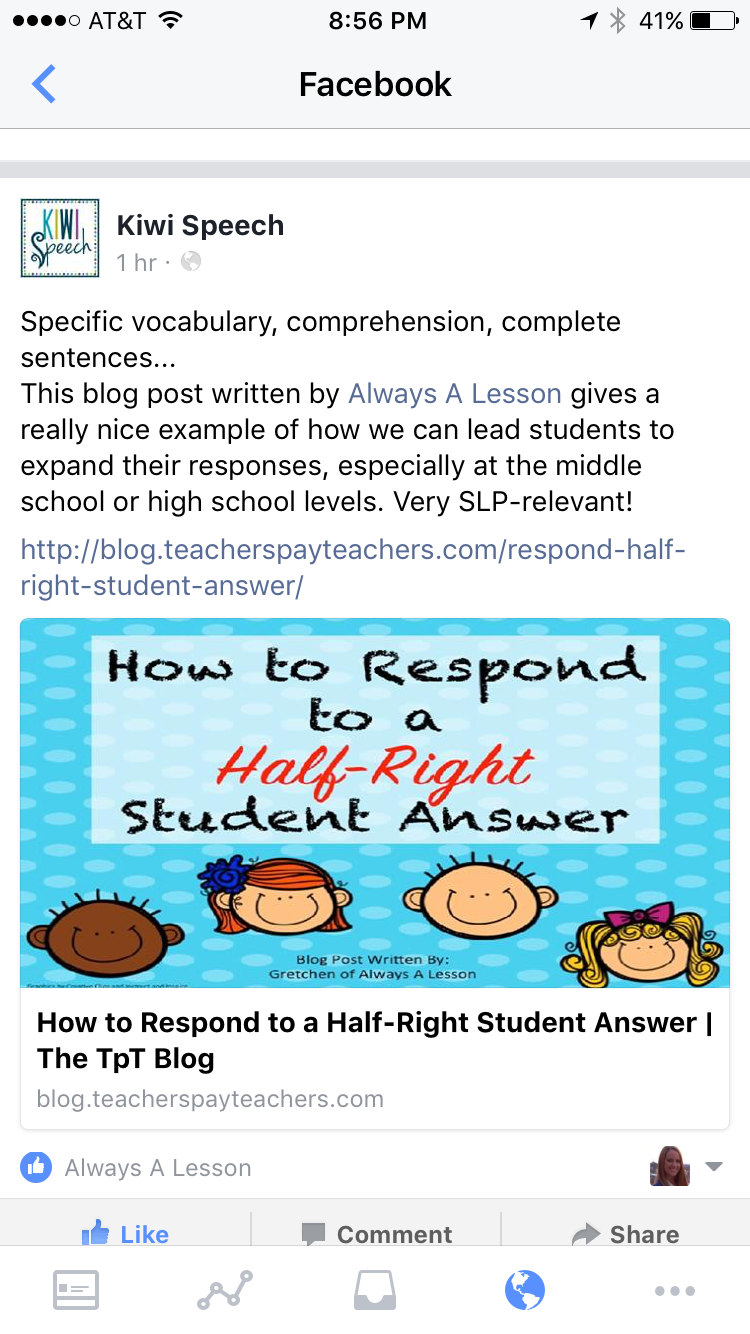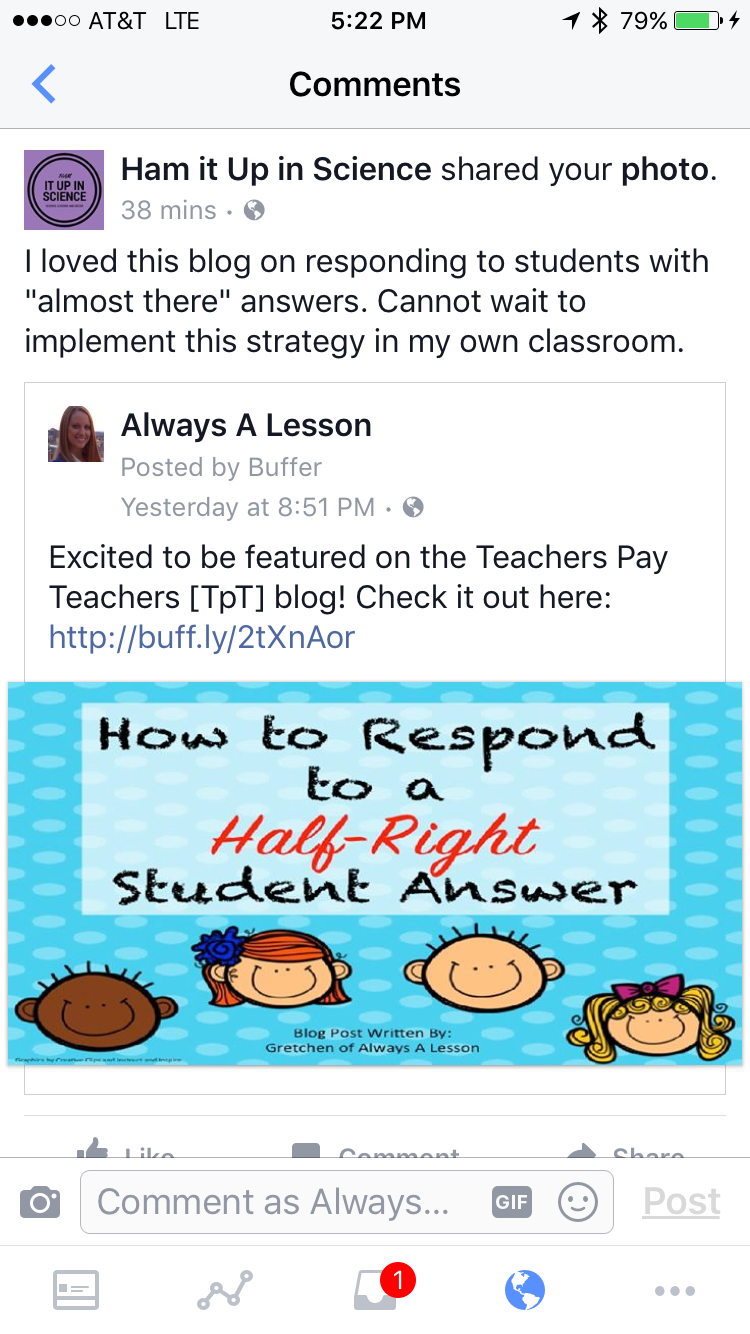How to Respond to an Incorrect Student Answer
This blog post now exists on the Teachers Pay Teachers blog. The title has been altered to read “How to Respond to a Half-Right Student Answer.”
One area I struggled in when teaching was accepting half-right answers from my students. They would be on the right track when answering one of my questions, and I’d say “yes, you got it…” and then add on to their answer so that it was complete and accurate. My habit of filling in the blanks or inferring their thinking didn’t help my students or myself.
- My students never built muscle memory of answering questions in depth with accuracy.
- I never utilized the data from student responses to inform my instruction.
I would grade an assessment and was shocked at the results. I couldn’t believe the students struggled. I knew they knew it. We had just covered it. They had just “told” me.
Or, did they?
It wasn’t until I became an instructional coach through The New Teacher Project via TEACH Charlotte that I learned how to be patient with student learning. I slowly mastered the art of cultivating student responses to their fullest potential by doing nothing difficult or out of the ordinary. I simply did not accept any answer but the right one- and the right one is a FULL one.
That’s it!
I would provide feedback to students so they knew what part of their answer was correct as well as what portion needed to be revised. I then would open the discussion up to other students to add on to the original answer until we arrived at a 100% complete answer. I then returned back to the student with the original answer and had them revise their response. This helped cement the new correct answer into their brains instead of their incorrect first attempt.
An Example
Me: “What is the benefit of companies dividing their labor so that employees are specialized in one aspect of their work?”
Student A: “They get good at it.”
Me: “You are on the right track when saying ‘good at it,’ but lets be more specific as to what that means and by whom.”
Student B: “The workers only do that one thing so they get good at it.”
Me: “Good. Now we know we are talking about the workers instead of saying ‘they.’ But there is a term we learned in this unit to better describe ‘workers’. What was that?”
Student C: “Employees!”
Me: “Right. [Student B] told us that the employees only have to do that one thing and that they get good at it. I want to know how that happens. Go deeper.”
Student D: “Well, if you only have to do one job over and over then you become really good at it.”
Me: “You’re getting there. Remember my original question…Why is that a benefit to the companies?”
Student E: “Because they are good at it which means they don’t make mistakes and they can do it quickly because its a habit.”
Me: “Almost there guys. Just because you do it quickly without mistakes doesn’t necessarily mean it BENEFITS the company. Continue to go deeper. Why would a company want employees that worked quickly and correctly?”
Student F: “When employees mess up it wastes time because they have to do it again. And when they make mistakes it costs the companies money for the messed up materials. So if you do it right and make no mistakes they like you.”
Me: “We literally are at the finish line, but I need someone to take it home. If you the employee are doing your job quickly and correctly, why would the company want more employees like you?”
Student G: “If you work fast and correctly and they work fast and correctly and the guy over there works fast and correctly then they make more stuff faster and if they make more stuff faster they make money faster.”
Me: “BINGO! Let’s wrap this one up ya’ll… all that is missing are the terms from the first part of my question about division of labor and specialization. Who can clue me in on that and finish us out?”
Student H: “A company divides up the jobs its employees do so that they become a specialist, which means they only do one job over and over. They become really good at it and it helps the company make more of that item in shorter time and that brings in more money.”
Me: “Boom. There it is. Yes! Short answer = money. Long answer = The major benefit is that by dividing up a task into mini jobs where an employee can focus or specialize on one part of the job, they can move quickly and correctly, increasing output of goods which equals more money for the company. So I hear division of labor, specialization and the end result, money. That’s a wonderfully complete answer. Great group effort. [Student A], I’m coming back for ya, you ready?
Student A: ” So I said ‘they get good at it,’ but what I meant was companies divide up labor so employees specialize in a task making everything go faster and correctly which makes more goods resulting in more money.”
Notice I posed a question, engaged multiple students, and didn’t stop until I got exactly what I wanted: the FULL right answer. Once there, I summarized our discussion before heading back to the original student. That means students had multiple opportunities to solidify knowledge and hear it concisely from peers and myself. My instruction strengthened and student achievement soared because I was giving my students multiple opportunities to engage with the content and I was constantly receiving feedback in student answer form that helped direct my approach to teaching and supportive intervention. Tweaking my one behavior of not accepting anything but the right, full answer resulted in better instruction and better learning.
Suggestions for Students
- Speak in complete sentences, repeating the question in the answer
- Use content specific vocabulary instead of slang or everyday lingo
- Thoroughly explain a process from start to finish
- Think: specificity over big ideas
- Apply feedback from teacher and correct responses from peers in revised response
See What Other Educators are Saying:




